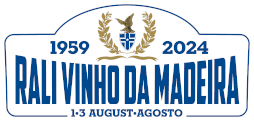PE 1 e 5 – Golf court
This Special Stage begins at ER 207 just after the entrance to the local Golf Court and includes a small sequence of straight lanes up to Santo da Serra. From there and up to Fonte de Santo António, the route is very sinuous and narrow. After the, also very fast evolution up to Ribeira de Machico and Portela, which precedes another flat zone up to Serragem in Santo da Serra.
Accesses:
Via Santo da Serra: at the crossroads with Fonte de Santo António Road, and, by Municipal Road Caramachão and Municipal Road Lombo das Faias.
Via Machico: At the Ribeira de Machico, the stream pay attention to the Emergency Exit, and Portela by Caminho Fajã dos Rolos.
Via Porto da Cruz: By ER 108 (pay attention to the Emergency Exit).
PE 2 e 6 – PALHEIRO FERREIRO
The ER 201, commonly known as Caminho dos Pretos, is the "cathedral" of Madeiran rallies and, in the past, few were the races which would not include it in its itenerary. It is done by "going up" between Palheiro Ferreiro and Terreiro da Luta with a lane that mixes, almost perfectly, high speed zones with those that require a lot of technich.
Accesses:
Via Funchal: By Caminho de São João Latrão, by Rua Nova Curral dos Romeiros Road and in Choupana, by the Caminho do Meio and Caminho do Terço.
PE 3 e 7 – BOAVENTURA
Boaventura was, for many years, the only Special Stage to be fought entirely in the North of the island. For many years it was also absent from the Rally Vinho da Madeira itinerary. It demands a lot of technic due to the constant changes between ups and downs and high and low speed zones, in a route sometimes narrow between Boaventura and Arco de São Jorge.
Accesses:
No alternative access roads. It is recommended a timely presence for the beginning and the final moment of the Special Stage.
PE 4 e 8 – SANTANA CITY
Introduced twelve years ago in the Rally Vinho da Madeira's itinerary, it begins around the center of the parish of Ilha and finishes at Eiras Road. It is mostly always uphill, except for some flat and very fast areas. In its route there are many technically demanding zones in which some "hook" like curves appear. It is usually marked by very specific climatic conditions which vary a lot from the rest of the island.
Accesses:
Via Santana: By the Caminho das Queimadas, by the Padre Agostinho J. Cardoso Road, by the Joaquim S. Branco Road (Atention: Emergency Exit) and by the Caminho Feiteira do Nuno.















